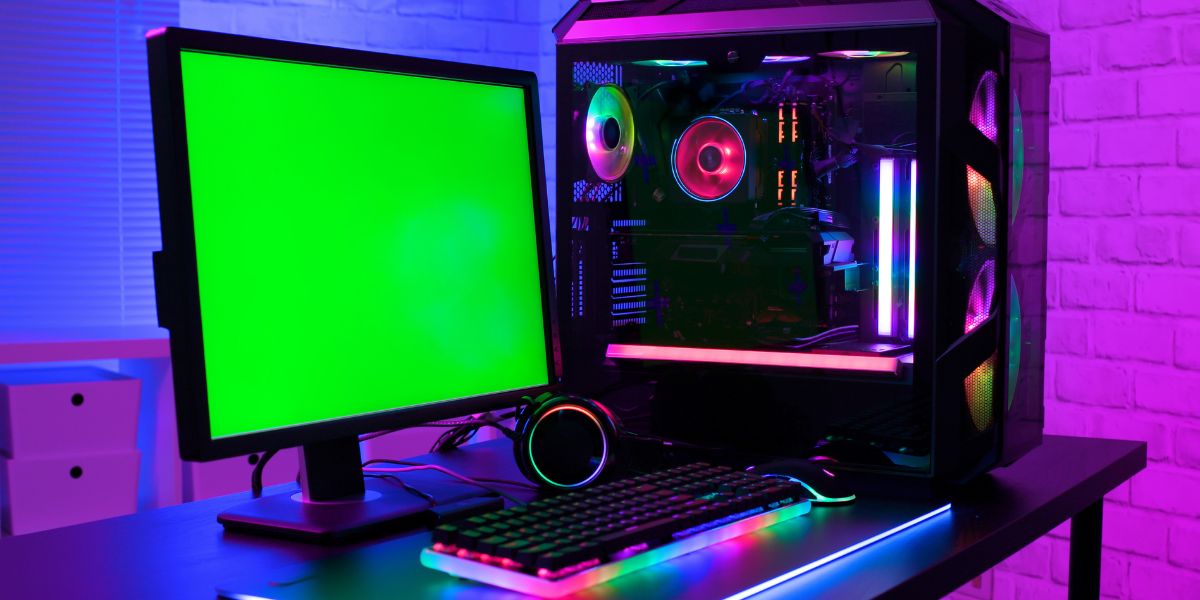
When looking to build a gaming PC on a budget, you might be surprised at the quality and performance you can achieve without breaking the bank. It's all about strategic decision-making and knowing where to allocate your resources to get the most bang for your buck. By carefully selecting components and keeping an eye out for cost-effective deals, you can create a gaming setup that surpasses your expectations while staying well within your financial limits. So, how exactly can you make that happen?
Setting a Realistic Budget
When planning to build a budget gaming PC, it's crucial to determine a realistic budget that aligns with your performance expectations and financial constraints. Setting a budget helps you focus on components that offer the best value for your specific needs. Consider factors like the types of games you want to play, desired graphics quality, and potential future upgrades. By establishing a clear budget from the start, you can make informed decisions throughout the build process.
To set a realistic budget, start by researching the current prices of key components like the processor, graphics card, memory, storage, and power supply. Understanding the general price ranges will give you a good idea of how much you need to allocate for each part. Remember to account for peripherals like a monitor, keyboard, and mouse, as well as operating system software if needed. It's also wise to set aside some funds for unexpected expenses or future upgrades. By carefully considering your performance needs and financial limits, you can create a budget that maximizes the value of your gaming PC build.
Researching Cost-Effective Components
To build a budget gaming PC that offers optimal performance without breaking the bank, start by researching cost-effective components. Look for processors that provide a good balance between price and performance, such as AMD's Ryzen series or Intel's Core i5 models.
When it comes to the motherboard, opt for a model that fits your processor socket and has the necessary features without unnecessary frills.
For memory, consider DDR4 RAM modules with decent speeds and capacities – 8GB is usually sufficient for gaming.
Graphics cards are crucial for gaming performance, so research models that offer the best performance for your budget, like AMD's Radeon RX series or Nvidia's GTX line.
Storage is essential; a combination of a solid-state drive (SSD) for the operating system and a larger hard drive for games and files is cost-effective.
Lastly, ensure your power supply unit (PSU) is reliable and provides enough wattage for your components without overspending on unnecessary features. By researching and selecting cost-effective components wisely, you can build a powerful gaming PC without breaking the bank.
Hunting for Deals and Discounts
Scour various online retailers and tech forums for exclusive deals and discounts on gaming components to maximize savings while building your budget gaming PC. Check popular websites like Newegg, Amazon, and Micro Center for ongoing sales and promotions on CPUs, GPUs, RAM, SSDs, power supplies, and more. Sign up for newsletters or follow these retailers on social media to stay updated on flash sales and limited-time offers. Additionally, visit forums like Reddit's r/buildapcsales for community-curated deals and discounts on a wide range of PC parts.
Don't forget to explore manufacturer websites for refurbished or open-box items that come with a warranty but are sold at a lower price point. Keep an eye out for seasonal sales like Black Friday, Cyber Monday, and Amazon Prime Day, where you can snag significant discounts on gaming components. Consider buying components in bundles or combo deals to further reduce costs. By being vigilant and patient in your search for deals and discounts, you can assemble a powerful gaming PC without breaking the bank.
DIY Assembly and Installation
For a seamless building experience, mastering the art of DIY assembly and installation is crucial in bringing your budget gaming PC to life. Start by organizing your workspace with all the necessary tools such as a screwdriver, thermal paste, and cable ties.
Lay out all the components carefully, following the motherboard manual to ensure proper alignment and installation. Begin by installing the CPU onto the motherboard, then proceed with the RAM, GPU, and storage devices. Don't forget to attach the power supply unit and connect all the cables securely.
When mounting the motherboard into the case, use the standoffs provided to prevent any short circuits. Secure the motherboard with screws and connect the front panel headers. Install the CPU cooler, ensuring optimal thermal paste application. Cable manage efficiently to improve airflow and aesthetics.
Optimizing Performance Within Budget
Consider maximizing your budget by strategically selecting components that offer the best performance for your gaming needs. When aiming to optimize performance within a budget, focus on key components like the graphics card, processor, and RAM.
The graphics card plays a significant role in gaming performance, so allocate a good portion of your budget to this component. Look for budget-friendly options that still offer great performance, such as AMD's Radeon RX series or Nvidia's GTX series.
Processors are crucial for overall system performance; consider mid-range options like AMD's Ryzen 5 series or Intel's Core i5 series for a balance between cost and performance.
Additionally, ensure you have enough RAM to handle modern games; 8GB is typically the minimum, but 16GB will provide better performance for multitasking.
Prioritize investing in a solid-state drive (SSD) for your operating system and frequently played games to improve load times and overall system responsiveness within your budget constraints.




